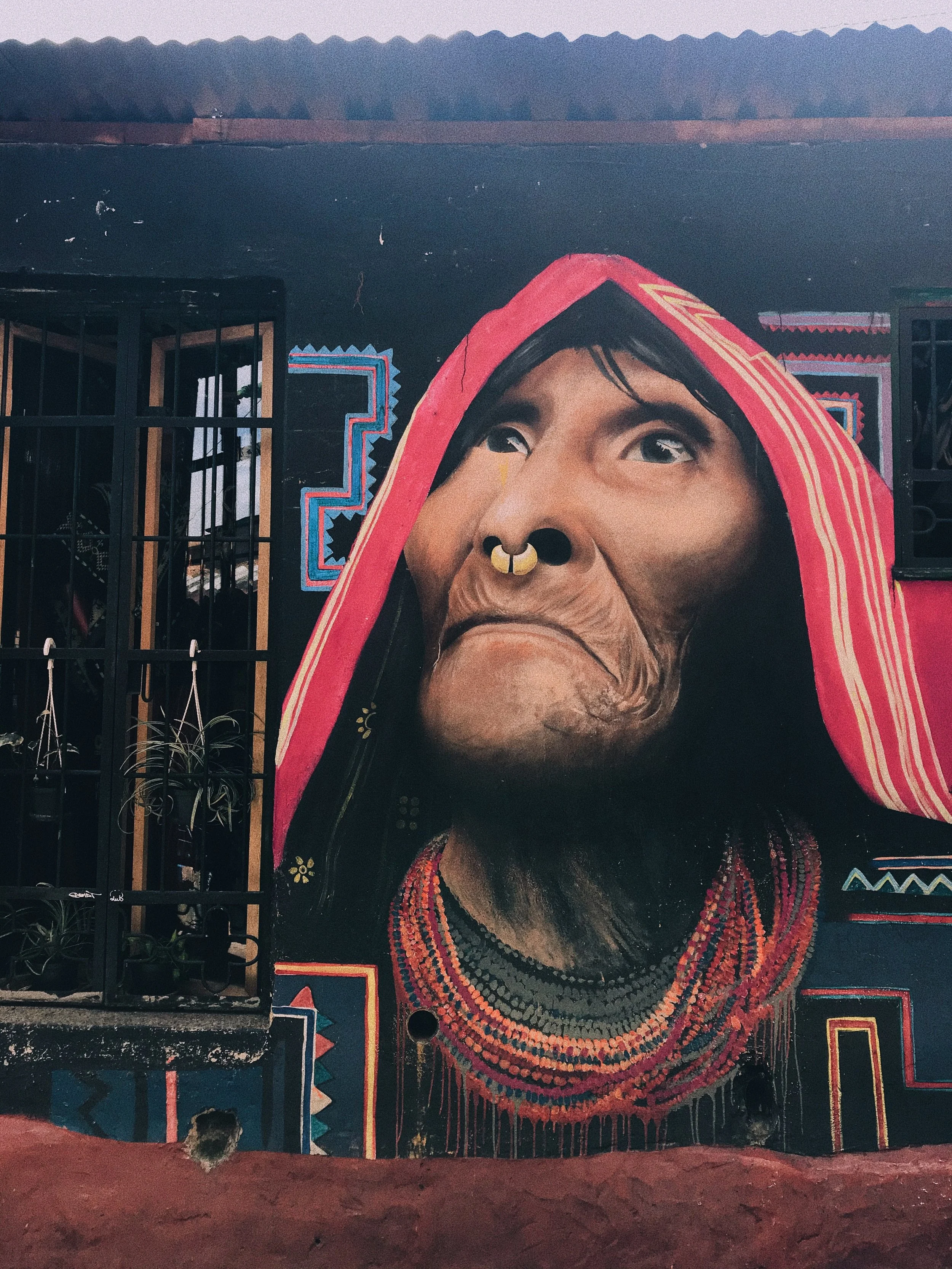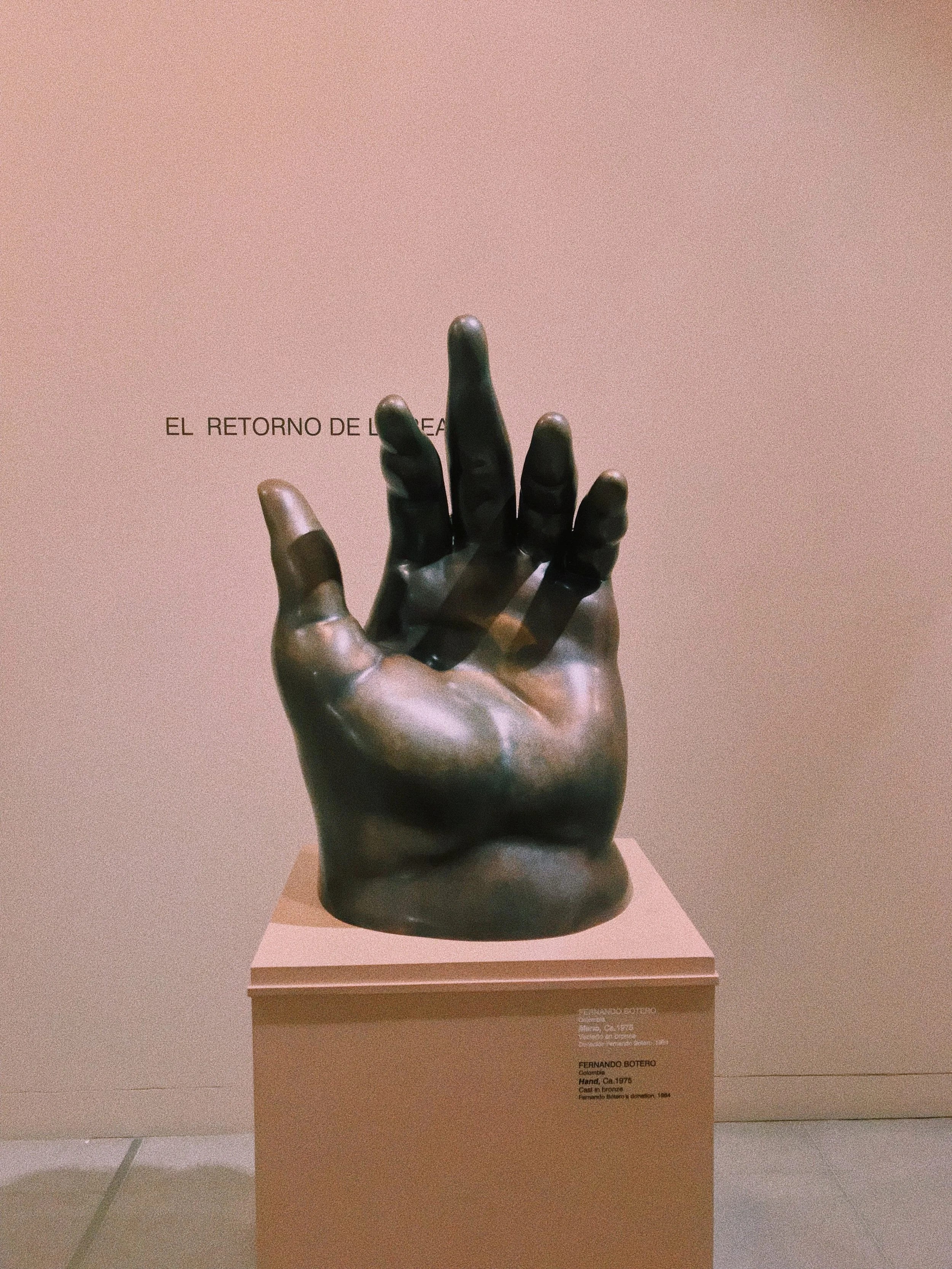THANK YOU 4
HI HI!
Wow, a little over a month away? This is absolutely bananas! Thank you for sending over your second to last payment, you are on top of things and I am so excited to almost squeeze you in Colombia and share how beautiful, diverse, and exciting traveling with a group of incredible irl angels can be.
In this mini edition of little things to know about our destination, we’re focusing on ART.
Colombia boasts a rich history of art, ranging from pre-Columbian petroglyphs and pottery to Botero’s famous self-named art style that was popularized in the late 50’s, to our cities becoming living museums of some of the most stunning street art in the world, with Bogotá hosting over 600 murals directly supported by the city.
EL MERCADO DE LAS PULGAS
We’ll be visiting a famous artisan market in Bogotá in the neighborhood of Usaquén where we’ll have the chance to shop artisanal jewelry, handbags, clothing, art, and so much more. This is, to me, an unmissable part of the trip, with the opportunity to support local artists and bring back one of a kind pieces that will remind you every day of how beautiful it is to choose travel, adventure, and sustainability.
You might see:
Handbags made by the Wayuu people, who are Colombia’s largest Indigenous group. They are known for their weaving traditions and live in La Guajira, which is in the Northeast of the country, a landscape of desert and ocean.
Venezuelan migrants selling origami and sometimes even handbags made out of Venezuelan bolivar banknotes- money that, because of the humanitarian crisis over the past decade in Venezuela, has been extremely devalued. It is a powerful, heartbreaking image to come across, a form of protest, and a way of making some money in such brutal conditions. I came across an interesting and very detailed paper on this practice should anyone want to dive further into it.
Spices from all regions of Colombia, an exciting opportunity to bring back flavors from the Amazon, the Andes, and more.
Handpainted chocolateras (stovetop pitchers to make hot chocolate), moka pots, lemon squeezers, and more.
Emberá necklaces, a traditional art from the Emberá people of Colombia and Panama. The Emberá tribe from Chocó, Colombia, but it is an area that many of them have had to flee due to guerrilla or paramilitary violence. Beadwork is a sacred art to them and Emberá women are the primary artisans who pass down their knowledge to future generations.
Tagua rings, made of the endosperm of seeds of palm trees. The tagua nut is harvested, dried, and carved into various shapes. Once polished, it develops a smooth, glossy finish. It is remarkably durable and its natural color is white, but it can be dyed or painted, which gives it immense versatility.
CASA TERRACOTA: THE LARGEST PIECE OF POTTERY IN THE WORLD
We’re going to have the childlike joy of visiting Octavio Mendoza Morales’ Casa Terracota, an architectural marvel entirely made of clay in Villa de Leyva, Colombia.
Construction began in 1999 and, though Octavio continues to add onto his life’s work, was mostly completed by 2016. Each section was baked under the sun for thirty days, then left to cool for thirty days. The clay was locally mined and the house runs on solar power. Though Octavio initially built the house to live in it, it quickly became a major attraction for the sleepy town of Villa de Leyva, so he moved into a smaller home nearby and opened the house to the public. It is such a beautiful testament to Colombian ingenuity, sustainability, and one artist’s deep appreciation for the earth.
FUNDACIÓN ATHOS
When we started doing our Travel Experiences we wanted to benefit Colombia and share our love for it. We support as many local businesses as we can, tip generously, buy from artisans, and on every trip choose an organization to support with a donation, which is included in the cost of the trip. We have chosen for this trip the Fundacion Athos Escuela de Artes y Oficios. This foundation offers training in traditional trades to the citizens of Villa de Levya. It also offers practical classes teaching people skills that will help them get jobs after they complete their courses. They support the arts and offer art classes to the general public. We love the passion the foundation has for Villa de Leyva and their desire to keep traditions alive in the area and to give tools to people so they can support their families with pride in what they do. Thank you, thank you, thank you for making this possible!
Talk next month and then see you IN COLOMBIA!

















